Ottoman rule and Mediterranean climates forged Albanian cuisine. From pepper-forward dishes to sickeningly sweet desserts, the dishes of Albania are similar to that of their Balkan counterparts and fellow southern European neighbors and yet somehow completely their own.
Traditional Albanian food is similar to a lot of Turkish food but with a twist. Each dish offers a unique tango of flavors, whether it’s tangy and creamy or sugary and salty.
From savory to sweet, here are 7 traditional Albanian food items you must try.
Tavë Kosi
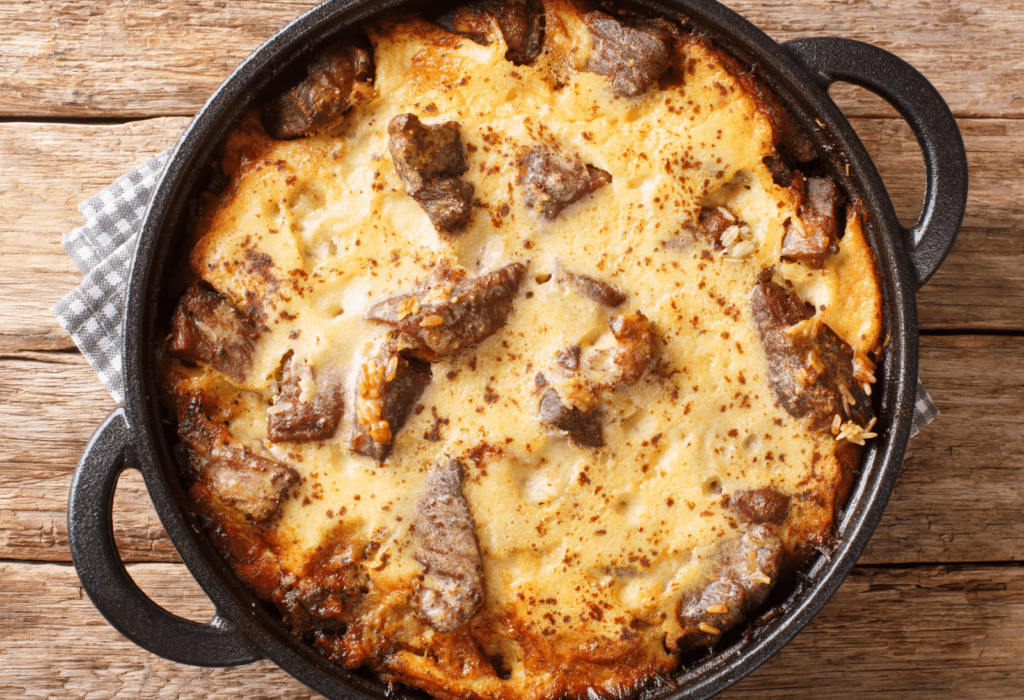
The simple but flavorful tavë kosi dish is a traditional Albanian food item. It’s made up of baked lamb and rice and topped with a roux comprised of egg and yogurt. It’s like a casserole but with the texture of a creamy quiche. The dish must be delicious since it dates back to the 15th century and it’s stuck around since originating in the city of Elbasan, Albania.
The best place to try it? Restaurant Mangalemi.
Fërgese
Peppers are a popular ingredient in a lot of Albanian cooking but the best way to try them is to try fërgese. It’s a delectable and savory mix of roasted red peppers, tomatoes, onion, feta cheese, and yogurt. When combined, the flavors all melt into a creamy mixture that is perfect for spreading on bread or eaten along with meat.
Extra tip: Fërgese me piperka means it’s a dish made with peppers and is vegetarian. This version is most often served as a side dish. Ferfese me melçi is not vegetarian and it means “made with liver” and the portion is more commonly found on a menu as a main dish.
If you find yourself in Tirana, make sure to stop by ODA, where people rave about the fërgese and other traditional dishes served up.
Byrek
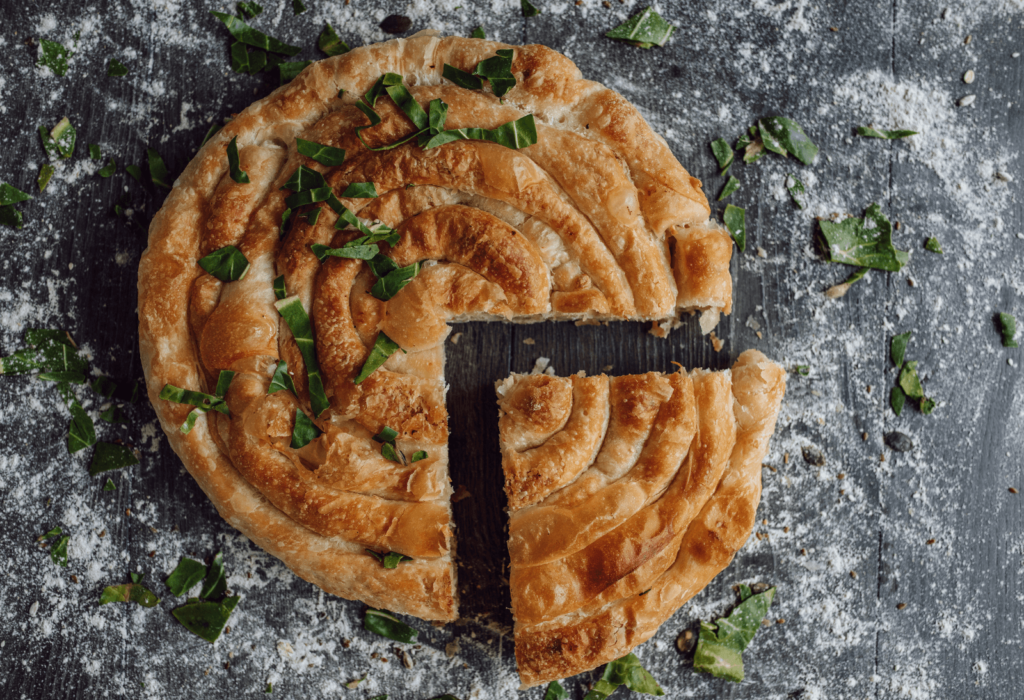
You’ll often hear people call byrek a pie, but much like its Balkan cousin, burek, it’s not the kind of pie Americans think of. Instead of sweet apple pie, this traditional Albanian food item consists of layers of phyllo dough filled with things like cheese, spinach, or meat. The Ottomans spread byrek and similarly named dishes across southern Europe and now it’s a widely popular street food. Who could ever resist the flaky dough?
You can find byrek on virtually every menu in Albania, but somehow it tastes better when you order a slice from street vendors called “byrektore.” There’s nothing like leisurely strolling with a cheese pie in hand.
Qofte
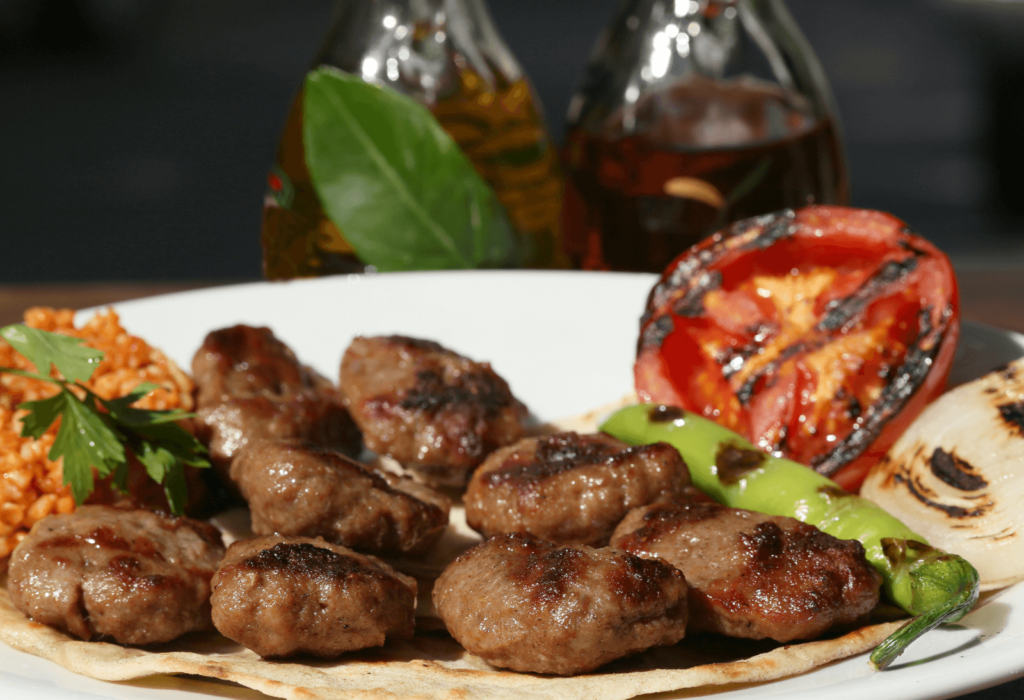
Think of qofte as Albanian meatballs, even if they don’t always come in that shape. The qofte are first assembled by mixing minced meat (mostly lamb or beef) with various seasonings as well as eggs and breadcrumbs. You might even get a hint of meat in there. The shape of this traditional Albanian food, as we mentioned, is not always round, though. If you order these on a menu, don’t be surprised if they are served flattened or on a kebab skewer. Whichever way they arrive, they are delicious.
Extra tip: If you’re looking for a veggie option, search your menu for the qifqi, which is the non-meat version of qofte.
The best spot to try this traditional Albanian food is at Taverna Kuka. (I imagine people don’t complain about the quaint outdoor seating either.)
Petulla
If you love beignets, wait ‘til you try petulla. You cannot go wrong with fried dough and in Albania, this is a commonly enjoyed snack and often found at food stands. The fried dough can be topped with anything from sweet options like strawberry jam and honey to savory options like feta cheese.
The reviews are in and the best petulla are fried up at Ambassador.
Bakllava
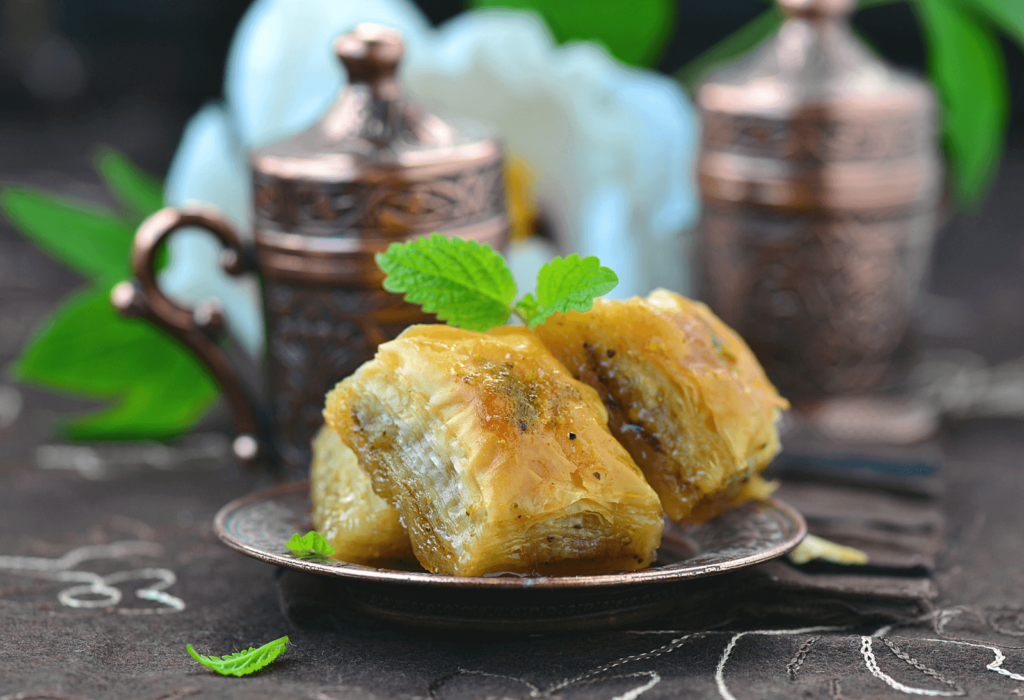
Another remnant of the Ottoman and Turkish influence is bakllava. Every Balkan country has its own version of the sickeningly sweet pastry-nut dessert. In Albania, the layered dessert is often topped with a sweet simple syrup sauce called “shërbet.” For a truly authentic experience, opt for the “bakllava me mjalte” which means that the honey used is sourced directly from the hive.
Fill up on bakllava over at Meva Patisserie.
Kabuni
Another traditional Albanian dessert, Kabuni (isn’t that fun to say?), or baked rice cake, is slightly less sweet than Baklava. It’s made up of butter-fried rice, mutton broth (don’t be alarmed), and raisins. It’s then boiled and sugar, cinnamon, and ground cloves are added in. It’s then cooled down and served cold. It might seem odd for there to have a meat component in a dessert but it’s cut perfectly by the caramelized sugar and rich butter flavoring in the rice.
Dying to try some kabuni? Make sure your Albania trip takes you to KROI Restaurant.

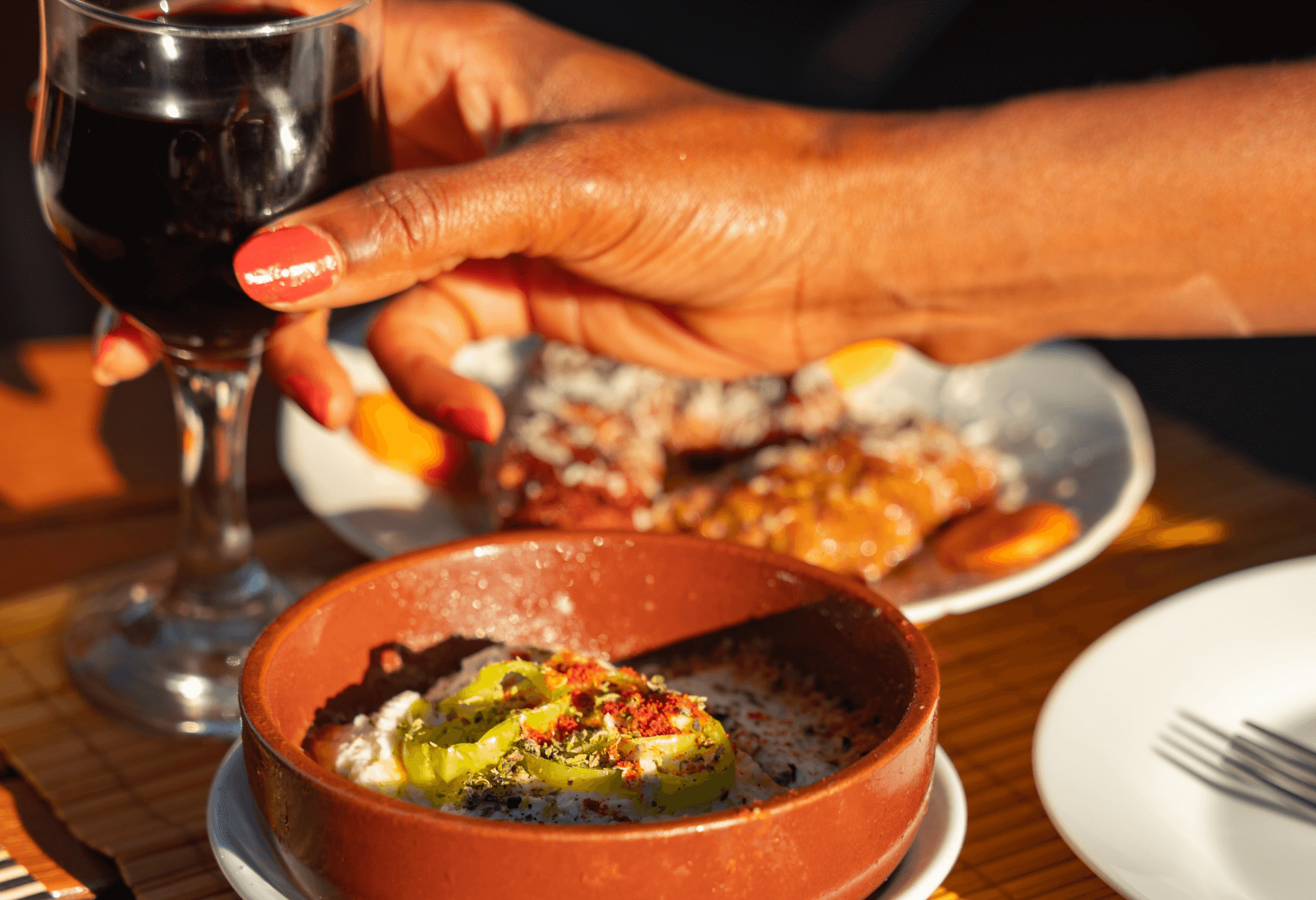







 by your friends at The Daily Navigator
by your friends at The Daily Navigator



